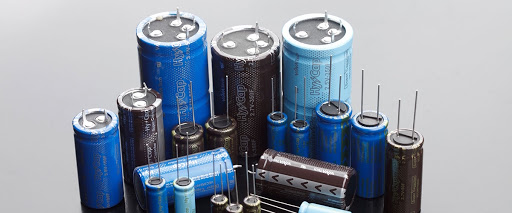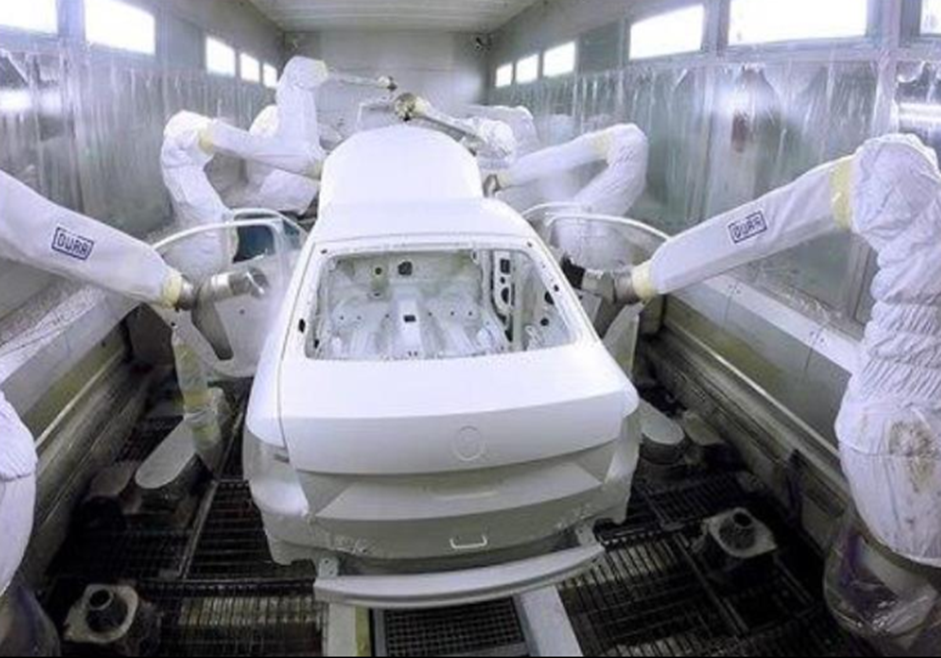
Energy is an extremely interesting area that has been developing at a rapid pace for many years in a row. Habré publishes a variety of articles about alternative energy sources, batteries from Mask, electric vehicles, etc.
But there is one topic that is not touched on very often. These are supercapacitors. This article is dedicated to them, it reveals the essence of the supercapacitor, the scope, plus describes cases from different industries - industry, transport, etc., where these systems are used.
Supercapacitor, what are you?
We all know what a battery is - it is a source of constant power, limited by the discharge current. Batteries can be large or small, and they are widely used - from vehicles to toys.
But this article is all about supercapacitors, so it's time to talk about them. So, any supercapacitor is a source of not constant, but impulse power. It is limited only by the equivalent internal resistance, which allows the element to operate, in fact, on short-circuit currents.
But at the same time, unlike a battery, it is a source of short-term, albeit powerful pulses of energy. Accordingly, supercapacitors are used wherever high power is needed for a short period of time.

Supercapacitors are also called supercapacitors. These cells usually consist of two electrodes immersed in the electrolyte and a separator. The latter is needed in order to prevent the movement of charge between two electrodes with opposite polarity.
Supercapacitors have two positive properties - high power and low internal resistance, which makes them different from capacitors and storage batteries. The most common electrode material for supercapacitors is active carbon, which has two important features, including a very large surface area and a small separation between charges.
Another positive point is the long shelf life and long service life of supercapacitors. All this is due to the peculiarities of energy storage. So, supercapacitors work by separating charges. This process is easily reversible, so supercapacitors can release energy really quickly.
Now a little about the definition of the characteristics of supercapacitors. Unlike batteries, where the main characteristic is the capacity, measured in Ampere-hours, for supercapacitors this is Farad. Here is the formula that allows you to determine the energy of a supercapacitor:
Energy (J) = 1/2 * Capacitance (F) * Voltage squared (V)

There are several types of supercapacitors:
• Double layer, or DSC.
• Pseudo-capacitors.
• Hybrid capacitors.
In the first case, the system consists of two porous electrodes separated by a separator filled with electrolyte. The energy supply comes from the separation of the charge on the electrodes with a very large potential difference.
In the second, the system includes two solid electrodes and is based on two energy conservation mechanisms. These are Faraday processes and electrostatic interaction.
The third option is a transitional one between capacitors and batteries. The electrodes here are made of different materials, and the accumulation of charge is carried out thanks to different mechanisms.
Where can supercapacitors be used?
Quite a logical answer - in industries where you need to give energy quickly and in large quantities. In particular, it can be:
• Alternative energy, energy storage using fuel, wind and sun waves.
• Transport systems - this can be engine starting of cars, hybrid electric vehicles, locomotives, etc.
• Energy storage in households - for example, where solar cells or wind turbines are used.
• Electronic devices where supercapacitors are used as a source of short-term power supply.
• UPS - both small and very large. In uninterruptible power supply systems, supercapacitors can be used in conjunction with fuel cells and other sources.
• Traditional power engineering, in areas where critical loads are inevitable, but where uninterrupted operation of everything and everyone is required. These can be airports, communication towers, hospitals, etc.
• Electronic devices of various sizes and capacities.
With regard to wind energy and solar energy, supercapacitors should be used here for deploying hybrid energy storage systems, which include both a Li-Ion storage device and a storage device based on supercapacitors.
Examples of
A large number of them can be cited, but it would be reasonable to limit ourselves to the three most revealing ones.

Frequency-controlled electric drive. Here supercapacitors are needed in case of voltage dips and short-term, no more than 10 seconds, blackout. Such drives are used in continuous technological cycle areas at production facilities. In addition, supercapacitors should be used in an enterprise and in systems that supply an object with gas, water, heat and energy, etc. at compressor stations, in boiler rooms, pumping stations, etc.
Uninterrupted power supply unit.In this case, supercapacitors make it possible to compensate for voltage dips that lead to problems with the continuity of technological processes. Here we are talking about large objects, including industry and various kinds of infrastructure - for example, transport.

Supercapacitors, in particular, are used at the Skoda plant in the Czech Republic, namely, in a robotic workshop for painting car bodies. If the staining process stops for any reason, then the body will have to be returned to the beginning of the cycle.
Regulation of the power output of wind turbines.A big problem with alternative energy is the difficulty of maintaining the turbine power output at the same level. The higher the wind speed and the more powerful the wind itself, the more energy is generated. The lower, respectively, the less energy. As a result, the power output of the turbines can vary, and very significantly.
In this case, a supercapacitor can help, and in several ways at once:
• Maintaining the power supply at the same level during a short-term voltage failure.
• Ensuring the stabilization of frequency and voltage in transmission and distribution networks with a high concentration of renewable energy sources.
Are supercapacitors produced in Russia?
Yes, on Habré a few years ago the news was published that NUST MISis had developed a technology that opened the way for a domestic company to launch the production of supercapacitors.
So, in 2017, TEEMP launched the production of highly efficient supercapacitors and modules based on them in Khimki. Moreover, all these are purely Russian developments. TEEMP, by the way, produces flat single cells in a laminated case, which can be used in chemical current sources with organic electrolytes: supercapacitors, lithium-ion batteries, metal-air current sources.
At the same time, TEEMP produces cells of its own patented design - a prismatic cell with a current collection over its entire surface. And this was done not in order to show its uniqueness, but purely from a practical point of view - the current collection distributed over the entire surface ensures the uniformity of thermal fields, thereby slowing down the degradation process and extending the service life of the supercapacitor.
TEEMP products are unique in many ways. Supercapacitor modules of the company successfully operate at temperatures down to -60 ° C. They are distinguished by low internal resistance, which means they are able to provide large impulse currents. The proprietary design of cells and modules allows to reduce the weight and size of the supercapacitor assembly by 30% compared to similar devices.
In the dry residue
As a conclusion, we can summarize, indicating the advantages and disadvantages of supercapacitors. Some of them have been mentioned above, but for now it is worth listing them all separately.
So, the advantages:
• Relatively low cost of the energy storage device per 1 Farad.
• Extremely high power density.
• High efficiency of the cycle, which reaches 95% and more.
• Reliability, long service life.
• Wide operating temperature range.
• A huge number of cycles with unchanged parameters.
• High speed of charge and discharge.
• Permissibility of discharge to zero.
• Relatively light weight.
Disadvantages:
• Relatively low energy density.
• High degree of self-discharge. Low voltage per unit element.
There are still more advantages than disadvantages, and thanks to this, the technology is being actively implemented in an increasing number of industries. Now the specific capacity of supercapacitors is increasing, while the charging time, on the contrary, is decreasing. When a certain limit is reached, it will be possible to talk about a complete replacement of batteries with supercapacitors in some areas, which, in general, is already happening.